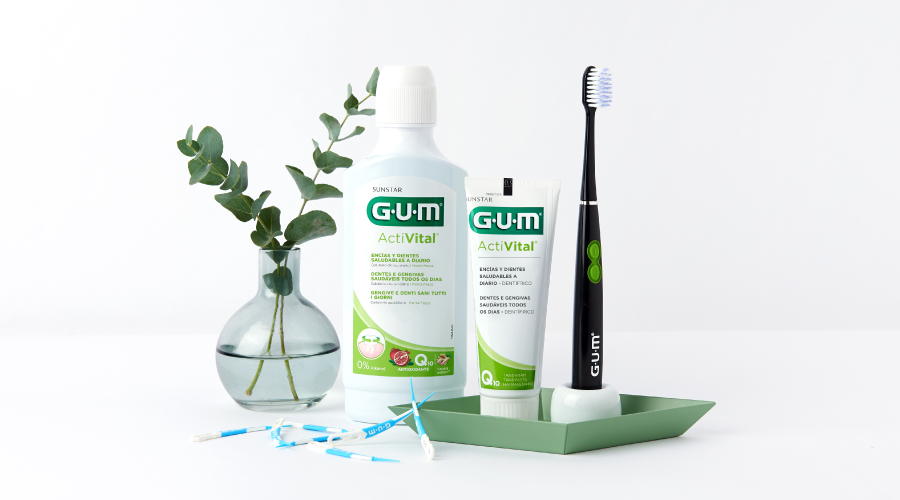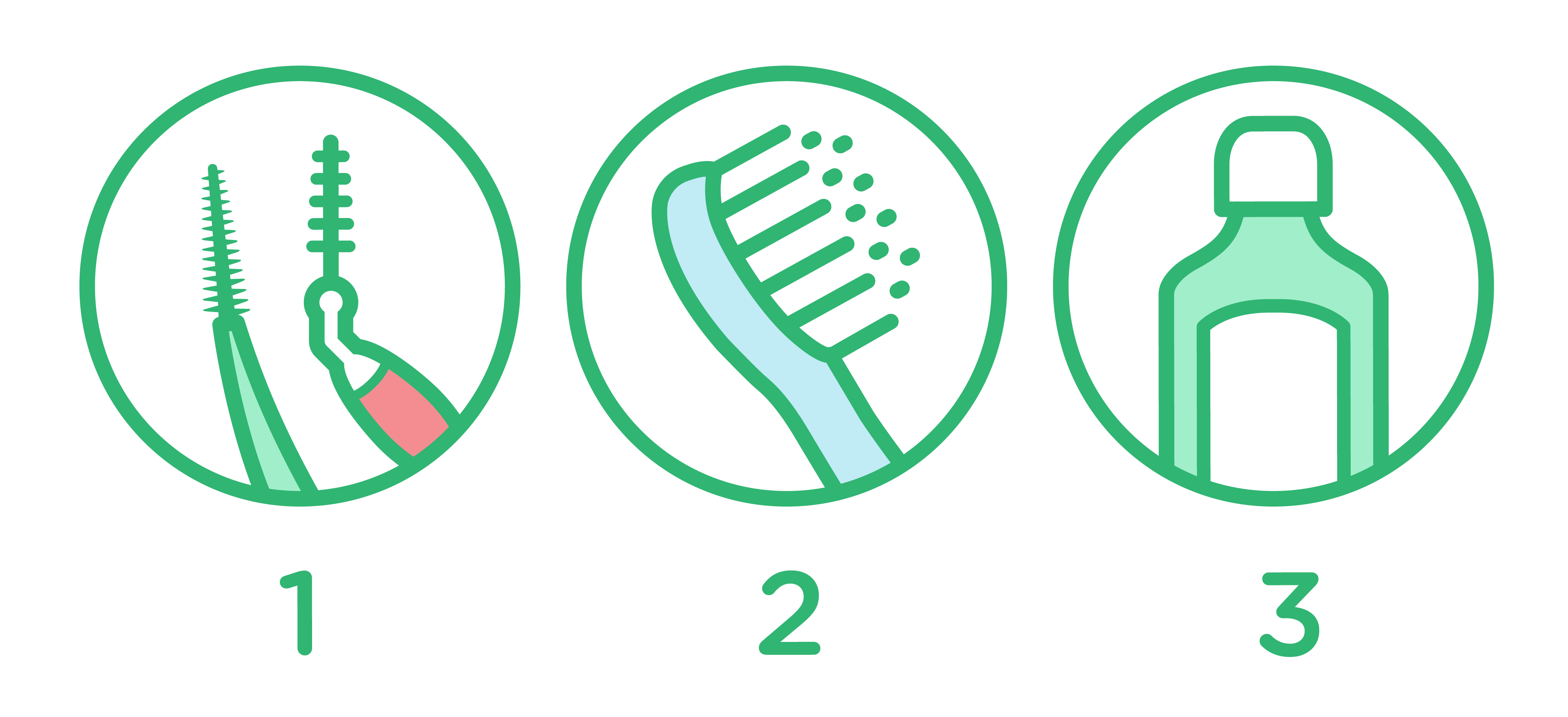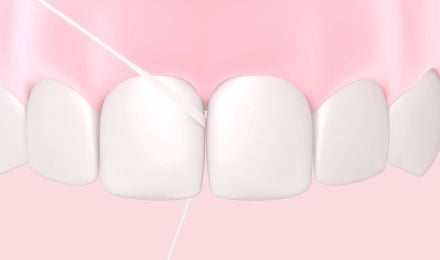
Oral Care Products: How to Choose the Best Products
According to the World Health Organization, the European region had “the highest prevalence of major oral disease cases” of all regions, affecting just over half (50.1%) of the adult population. This statistic, while deeply concerning, can be improved upon by committing to regular dental check-ups and practising a complete daily oral care routine.

Choosing the right oral care products is an essential first step in this process. With the right supplies and information, you’ll be able to take care of your teeth and gums, with confidence and overall well-being.
Factors to consider when choosing oral care products
Each person’s oral health needs are unique. Some are trying to reverse the early stages of gingivitis, while others are hoping to protect sensitive teeth. When selecting oral care products, it’s important to consider factors that influence your oral health. Here are some things to think about:
Life stage
Different life stages have unique oral health needs, from childhood to older adulthood. Children may need right-sized toothbrushes, while older adults may require products to manage dry mouth or sensitive gums.
Gum health
For those with sensitive gums or periodontal disease, it’s essential to choose products that cater to gum health. Options like soft-bristled brushes and gentle interdental tools can help prevent irritation and protect delicate gum tissue.
Tooth sensitivity
If you experience tooth sensitivity, choosing the right toothbrush and toothpaste can make a big difference in your comfort. Look for toothpaste with desensitising ingredients like potassium nitrate to help reduce discomfort.
Orthodontic treatment
People undergoing orthodontic treatment need products designed to clean around and under braces and other appliances effectively. Specialised brushes and orthodontic floss can help reach areas that are difficult to clean with traditional tools.
The importance of a complete oral care ritual
We believe that oral care should be an enjoyable part of your daily self care. More than a routine, this ritual is foundational to maintaining your oral health and whole-body health.

That’s why it’s important to take care when selecting oral care products, looking for options that offer the most daily benefits at each step of the ritual: interdental cleaning, brushing, and rinsing.
Step 1: Choosing the right interdental care products
While floss is a traditional staple for interdental care, allowing you to gently and effectively clean where your toothbrush can’t, it’s far from the only product out there to keep interdental spaces clean.


Floss
- While regular GUM® FINE FLOSS is fine for most people, those with tight spaces between teeth, or those with orthodontics or permanent retainers may benefit from GUM ACCESS FLOSS, which features a threader for easy flossing.
- GUM EXPANDING FLOSS is also an option. It threads thin and expands between teeth for thorough cleaning. If you have issues handling the floss, you can also try GUM EASY-FLOSSERS.
Improper use of floss can actually damage gums, so, if you have other options, there are some devices that can be better choices for many.

- Interdental picks: Interdental picks or soft rubber picks are great for dislodging food particles stuck between teeth, effective for removing plaque, and are easier to use than floss. They’re perfect for when it’s difficult to reach the back molars. They also stimulate and massage gums, which improves gum health. They’re a great steppingstone to start interdental cleaning.
- Interdental brushes: Some patients have orthodontic appliances to work around, and some patients already have gum issues. In these cases, an interdental brush makes it easy to dislodge food trapped in braces, bridges, and retainers. It’s also a great way to remove plaque from interdental spaces. It’s a reusable oral care product and one people can use daily to prevent food buildups that flossing doesn’t remove.
Not only do floss, flossers, picks, and interdental brushes remove food from spaces between teeth, they can help prevent sensitive, swollen, or bleeding gums. If you take the time to choose the right tool, then you can greatly decrease your chances of suffering from gum disease.
Go more in-depth on interdental cleaners: Interdental brush vs. floss: Which one should you choose?
Step 2: Choosing a toothbrush and toothpaste for brushing
The most basic supplies for taking care of your teeth and gums are a good toothbrush and the right toothpaste. When choosing a toothbrush, the first decision to make is whether to select a manual or electric toothbrush.
Manual toothbrushes
If you opt for a manual toothbrush, you should look for one with soft bristles that are gentle with your teeth and gums, to avoid damaging the enamel. Some of our toothbrushes are designed to reach in between teeth spaces and below the gum line. They have extra thin tip bristles, thinner at the top to better reach those hard-to-reach areas.
All of our toothbrushes ensure gentle removal of plaque and preserve the health of your gums and teeth. If you have specific oral care conditions or requirements, you might want to choose a toothbrush that can help you in your daily oral care routine: a toothbrush for sensitive teeth, or for cleaning orthodontics or to take care of your mouth after surgery.

Electric toothbrushes
If you find it difficult to adopt a good manual brushing technique, an electric toothbrush can help you a lot, largely because of their sonic vibrations or rotating heads.
Their movement and the unique design of their bristles facilitate deep clean where plaque accumulates. Have a look at our GUM SONIC DAILY Battery toothbrush, a great compromise between ease of use and efficacy.
Go more in-depth on toothbrushes: How to choose the right toothbrush for you.
Toothpaste
No matter what type of toothbrush one uses, the other component in the equation is toothpaste.
If you don’t have specific oral care issues or needs, you could opt for a daily solution like our GUM ActiVital® toothpaste. If you have sensitive teeth or are dealing with other oral conditions, a specialised toothpaste may be the answer.
Here are some conditions and situations where specially formulated toothpaste may help:
- Toothpaste that is gentle for inflamed or bleeding gums
- Halitosis-control toothpaste to help reduce the prevalence of bad breath
- Orthodontic toothpaste to protect teeth, gums and orthodontic appliances
- Toothpaste formulated to help reduce the effects of chronic dry mouth.
Remember, fluoride toothpaste protects teeth against cavities, and some can stimulate better gum health. Choosing the right toothpaste to pair with the right toothbrush can be a key to unlocking a good oral care routine.

Step 3: Choosing a mouthwash
The third and final step in your oral care routine starts with choosing the right rinse.
It’s important to know the difference between a fluoride rinse and an antiseptic mouthwash. A fluoride rinse doesn’t kill germs and bacteria — rather, it strengthens your enamel and helps provide great breath.
An antiseptic mouthwash, on the other hand, does kill bacteria and will also give fresh breath, but is an active treatment for gum disease and not meant for daily usage.
Some people may benefit from an antiseptic mouthwash as the final stage of their oral hygiene routine, for example when they underwent oral surgery or suffer from severe gum disease. However, it is important to always consult your dentist or dental hygienist, and follow their recommendations.
Oral care professionals may also recommend a fluoride mouth rinse for sensitive teeth.
There are also rinses for halitosis and dry mouth, as well. In all cases, it is recommended to use mouthwash at a different timepoint than brushing with a toothpaste. In that way, the fluoride in the toothpaste can do its job, while the fluoride in the mouthwash really adds additional and prolonged protection against cavities.
Go more in-depth on mouthwashes: Mouthwash basics for better oral health: how, when, and why

Additional oral care products to consider
There is a broad range of other oral care products out there in addition to brushes, toothpaste, interdental products, and rinses, many of which can be a great addition to a traditional regimen.
- Don’t forget about your tongue! It’s an important part of your mouth, after all, and cleaning it regularly with a tongue cleaner reduces bacteria buildup and helps combat bad breath.
- Oral moisturising sprays and gels can stimulate saliva production to alleviate dry mouth.
- Plaque disclosing tablets can teach patients about brushing habits and reveal areas that need work.
GUM supports your journey to better oral health
Change doesn’t happen overnight, but with the right tools, techniques, and education, over time you will find that sticking to a complete daily oral care ritual will improve your oral health — and whole-body health!
Ready to discover which products best meet your needs and preferences?
By answering six quick questions, we can help you get started on the path to better oral health.






